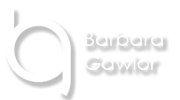Personal Why
My personal purpose is to make a lasting difference in people’s lives by building organizations that are not only strong and resilient but also thrive through innovation and adaptability. I am driven by the belief that by leveraging my expertise as a Chief Human Resources Officer (CHRO) and Behavioral Economics, I can help create environments where individuals and teams can grow, succeed, and contribute to a more sustainable future.
My approach combines deep HR expertise, cutting-edge behavioral economics research, and foresight methodologies to align HR strategy with future needs ensuring sustainable growth, leadership readiness, and organizational success, even in the face of complexity and uncertainty.
Areas of Focus
- Strategic and Operational HR Management (based on extensive professional experience, best practices, and technology)
- The Best-in-Class Talent Management Strategy (based on cutting-edge behavioral economics research and hands-on expertise)
- Behaviorally and Technically-Driven Learning & Development
- Change Management
- Executive Search (using predictive models for risk mitigation)
- Career Coaching
- Strategic Foresight
- Organizational Commitment
- Behavioral Assessments
Frameworks and Tools
As an HR Executive, I’ve always been driven to push boundaries and seek out the most innovative, disruptive, and practical tools to elevate my practice. Fueled by my passion for science, I’ve developed a range of frameworks and methodologies that not only help me understand and predict organizational behavior but also empower me to drive meaningful change. In this section, I will share some of these powerful tools. If you have any questions or are in search of a specific tool or framework to transform your organization, feel free to reach out—I’m here to help you unlock new possibilities.

Organizational commitment is the invisible force that drives performance, loyalty, and success within any organization. But what exactly fuels commitment? It’s not just a one-size-fits-all concept. Commitment arises from both rational (calculative) and emotional (affective) factors, each shaped by different forms of attachment: evaluation, experience, emotion, and engagement.
Here’s how it works based on my professional experience as well as my research activity. To make the process more illustrative, I created a framework that illustrates the process and relations between:
1 Calculative Commitment – This is driven by logic and analysis. Employees weigh the benefits of staying versus leaving, considering factors like salary, benefits, and career growth. This is often influenced by Evaluation Attachment, where performance is key, and individuals remain committed as long as the benefits outweigh the costs.
2 Affective Commitment – This goes beyond rationality. It stems from emotional connections and genuine engagement with the organization’s values and culture. Emotional Attachment drives loyalty, while Engagement Attachment encourages active involvement in the company’s mission. Employees in this space don’t just stay for a paycheck—they stay because they believe in what they’re building and feel deeply connected to their team and the organization.
3 Types of Attachment –
- Evaluation: Driven by performance, where employees stay because it makes sense for their career.
- Experimental: Positive experiences shape satisfaction, leading to stronger commitment.
- Emotional: Personal bonds and loyalty foster long-term dedication.
- Engagement: Deep involvement with the company’s goals increases affective commitment, making employees invested in the organization’s future.
Why Does Commitment Matter?
When employees are committed, they bring more than just their skills—they bring their passion, creativity, and loyalty. Committed employees are more likely to:
- Perform at higher levels, going above and beyond in their roles.
- Feel satisfied and aligned with the company’s mission and values.
- Remain loyal through tough times, helping organizations navigate challenges.
- Engage fully, contributing innovative ideas and becoming change agents within the organization.
Building Commitment
To foster commitment, organizations need to create environments where both calculative and affective attachments can flourish. This means offering competitive benefits while also nurturing emotional connections through team-building, recognition, and alignment with a shared purpose.
Commitment isn’t just about keeping employees—it’s about creating a thriving ecosystem where people feel valued, involved, and inspired to stay and grow with the organization.
General Health Questionnaire (GHQ)
PDA (Personal Development Analysis)






